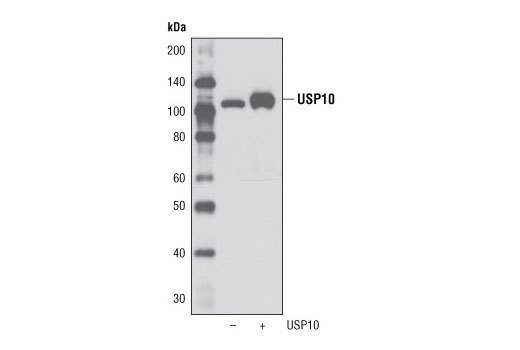USP10
| Gene Symbol | USP10 |
|---|---|
| Entrez Gene | 9100 |
| Alt Symbol | UBPO |
| Species | Human |
| Gene Type | protein-coding |
| Description | ubiquitin specific peptidase 10 |
| Other Description | deubiquitinating enzyme 10|ubiquitin carboxyl-terminal hydrolase 10|ubiquitin specific protease 10|ubiquitin thioesterase 10|ubiquitin thiolesterase 10|ubiquitin-specific-processing protease 10 |
| Swissprots | Q9BWG7 Q14694 B2RDJ8 B4DS84 Q9NSL7 |
| Accessions | CBX53857 EAW95470 EAW95471 Q14694 AK055375 AK293304 BAG56825 AK299618 BAG61546 AK315570 BAG37945 AL162049 CAB82392 BC000263 AAH00263 BC064516 AAH64516 BX537402 CAD97644 CR749515 CAH18330 D80012 BAA11507 DB077919 DQ892553 ABM83479 DQ895764 ABM86690 GD151792 XM_006721330 XP_006721393 XM_006721331 XP_006721394 XM_006721332 XP_006721395 XM_011523440 XP_011521742 XM_011523441 XP_011521743 XM_011523442 XP_011521744 XM_011523443 XP_011521745 NM_001272075 NP_001259004 NM_005153 NP_005144 NR_073577 NR_073578 |
| Function | Hydrolase that can remove conjugated ubiquitin from target proteins such as p53/TP53, BECN1, SNX3 and CFTR. Acts as an essential regulator of p53/TP53 stability: in unstressed cells, specifically deubiquitinates p53/TP53 in the cytoplasm, leading to counteract MDM2 action and stabilize p53/TP53. Following DNA damage, translocates to the nucleus and deubiquitinates p53/TP53, leading to regulate the p53/TP53-dependent DNA damage response. Component of a regulatory loop that controls autophagy and p53/TP53 levels: mediates deubiquitination of BECN1, a key regulator of autophagy, leading to stabilize the PIK3C3/VPS34- containing complexes. In turn, PIK3C3/VPS34-containing complexes regulate USP10 stability, suggesting the existence of a regulatory system by which PIK3C3/VPS34-containing complexes regulate p53/TP53 protein levels via USP10 and USP13. Does not deubiquitinate MDM2. Deubiquitinates CFTR in early endosomes, enhancing its endocytic recycling. {ECO:0000269|PubMed:11439350, ECO:00 |
| Subcellular Location | Cytoplasm. Nucleus. Early endosome. Note=Cytoplasmic in normal conditions. After DNA damage, translocates to the nucleus following phosphorylation by ATM. |
| Tissue Specificity | Widely expressed. {ECO:0000269|PubMed:11439350}. |
USP10 Antibody - 5553 from Cell Signaling Technology
|
||||||||||
USP10 (D7A5) Rabbit mAb - 8501 from Cell Signaling Technology
|
||||||||||
USP10 (C-7) - sc-365828 from Santa Cruz Biotechnology
|
||||||||||
USP10 (H-112) - sc-367736 from Santa Cruz Biotechnology
|
||||||||||
USP10 (P-18) - sc-79298 from Santa Cruz Biotechnology
|
||||||||||
USP10 (C-20) - sc-79296 from Santa Cruz Biotechnology
|
||||||||||
USP10 (T-20) - sc-79299 from Santa Cruz Biotechnology
|
||||||||||
Anti-USP10 antibody - ab70895 from Abcam
|
||||||||||
Anti-USP10 antibody - ab72486 from Abcam
|
||||||||||
Anti-USP10 antibody - ab117606 from Abcam
|
||||||||||
Anti-USP10 antibody - ab56433 from Abcam
|
||||||||||
Anti-USP10 antibody [EPR4261] - ab109219 from Abcam
|
||||||||||
Anti-USP10 Antibody (aa50-100) - LS-C286435 from LifeSpan Bioscience
|
||||||||||
Anti-USP10 Antibody (aa500-529) - LS-C157333 from LifeSpan Bioscience
|
||||||||||
Anti-USP10 Antibody (aa300-3500) - LS-C287738 from LifeSpan Bioscience
|
||||||||||
Anti-USP10 Antibody (Internal, clone EPR4261) - LS-C137948 from LifeSpan Bioscience
|
||||||||||
Anti-USP10 Antibody (aa50-100) - LS-C287739 from LifeSpan Bioscience
|
||||||||||
Anti-USP10 Antibody (clone 1H9) - LS-C173574 from LifeSpan Bioscience
|
||||||||||
Anti-USP10 Antibody (clone 1A10) - LS-C173656 from LifeSpan Bioscience
|
||||||||||
Anti-USP10 Antibody (clone 2E1) - LS-C173493 from LifeSpan Bioscience
|
||||||||||
Anti-USP10 Antibody (N-Terminus) IHC-plus⢠- LS-B5278 from LifeSpan Bioscience
|
||||||||||
Anti-USP10 Antibody (aa50-100) - LS-C93287 from LifeSpan Bioscience
|
||||||||||
Anti-USP10 Antibody - LS-C191378 from LifeSpan Bioscience
|
||||||||||
Anti-USP10 Antibody (aa500-529, AP) - LS-C273151 from LifeSpan Bioscience
|
||||||||||
Anti-USP10 Antibody (aa500-529, APC) - LS-C273152 from LifeSpan Bioscience
|

















